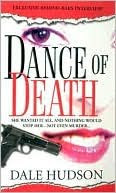 Somali refugee women and children watch as a pool of reporters and photojournalists arrives at their village. (Photos by Cathy Scott)
Somali refugee women and children watch as a pool of reporters and photojournalists arrives at their village. (Photos by Cathy Scott)
As the images taken off the Indian coast of Mogadishu, Somalia, and Mombasa, Kenya, streamed across the TV screen after pirates took
Capt. Richard Phillips hostage, I couldn't help but think back on my 16 days in country.
I stood on the beach near the Mogadishu airport, looking out on the vast Indian Ocean before me. It seemed so peaceful -- until I heard the gunfire coming from the city behind me from warlords and their armies
fighting for their turf. I was instantly reminded that I was there to cover the U.S. miltary's efforts to quell the violence.
I re-read several articles I wrote that were published in
The Vista Press in North San Diego County. I looked at the journal I'd kept while I was there, and I thumbed through photos I'd taken. For 17 years, my stint covering the military's Operation Restore Hope campaign seemed a lifetime ago. Now that the captain has been freed, it feels like the clan fighting in Somalia has just happened, and my days spent in the Horn of Africa came flooding back to me.
The Air Force misplaced my luggage at the
King Abdulaziz International Airport in Jeddah, Saudi Arabia, during an 11-hour layover there, so I literally had the clothes on my back. (Thank goodness, before we deplaned, I'd pulled my canvas shoulder bag that included a
TRS-80 portable computer, and, nearly as important, at least to me, my make-up bag. My luggage was never located.)
 1st Marines in Mogadishu pose for photos.
1st Marines in Mogadishu pose for photos.
A private first-class Marine, with the 1st Marines out of
Camp Pendleton, generously offered me two military-issue chocolate brown T-shirts (I still have them). Then, in Mombasa, Kenya, where we flew in to cover Somalis fleeing for safety to the Somali-Kenya border, I went into a small military exchange store and bought men's under briefs. Then, once at the Fleet Hotel, I bought a safari top and cargo pants and I was set. I happily removed the clothes I'd been wearing for four days and threw them out.
Below is an op-ed piece published in the
San Diego Union-Tribune a week or so after I returned from deployment with the military to Somalia and Kenya to cover Operation Restore Hope. It details my observations as I moved around the war-torn cities of Mogadishu, Mombasa and the primitive village of Waijir, Kenya. I read the column and remembered the children.
Given today's pirates stalking ships on the waters surrounding Somalia, the lawlessness I witnessed 17 years ago doesn't seem much different. And that's a sad commentary to the selfless efforts made nearly two decades ago by so many humane volunteers and military personnel.
THE SAN DIEGO UNION-TRIBUNE Friday, January 8, 1993
A visit to ‘the city of death’
Following are the impressions of Somalia and its people as related by a local reporter who traveled there with March Air Force Base troops to observe Operation Restore Hope.
By
CATHY SCOTT
As I landed in the capital city of Mogadishu on Dec. 14, I could see the locals around the airport, lined up behind a fence. It was as if the landlord had moved out, leaving the tenants behind. The stench of the country, the smell of death and disease, hit me the second I stepped onto Somali soil.
I was soon to find myself where some of the worst famine is found – in the inland city of Baidoa, aptly called “the city of death.”
Josie Clevenger, director of the International Medical Center Corps (IMC) and a former Peace Corps volunteer, couldn’t speak of the daily atrocities committed in the name of feuding warlords without crying. “I’ve never seen so much death and violence,” she said.
No anasthesia for surgeries
At the Balboa hospital in Baidoa, pain medication wasn’t available, so muscle relaxants were used instead. Surgeries, including double amputations, were done without anesthesia.
“Someone ought to do a story on the Somalis’ tolerance of pain,” Clevenger said. “They never cry out ... It’s unbelievable.”
Also unbelievable is the dedication of these relief workers who have been in Somalia since summer. I watched as Dr. Raymond Pollack, a 28-year-old medical student from Arizona, removed a wire from a 10-year-old’s jaw, shattered the week before from a gunshot blast. The boy simply braced himself by grabbing the arm of an attendant. He shed no tears.
The strain, though, is taking its toll on health care workers. Despite inoculations, they suffer from bouts of meningitis and dysentery. To see people living like cattle would upset anyone, but to witness it daily without improvement, while also putting themselves at risk, is unbelievably tough.
Many journalists who have been in Somalia for more than a few weeks also complain of sickness, especially those staying in the hotel (if you can call it that) in Baidoa adjacent to square huts made of mud, sticks and stones, immediately next to stagnant street water.
Reporters who already were in Somalia before the United States intervened came without military escort and therefore were not entitled to military rations or bottled water. However, in Mombasa, Kenya, the Air Force generously shared its water with the press.
Because my group -- made up of Los Angeles-based KCBS co-anchor
Bree Walker and her cameraman, a reporter from a Japanese TV station, and me -- had an Air Force escort, we were lucky enough to eat mostly military-issued meals and drink bottled water.
Flies are everywhere
We flew with both the Royal and U.S. air forces on a C-5 and
C-130s. Crew members were curious about what we had seen on our travels. One asked, “Did you see any stick people?” At first I thought he said “sick people,” but he repeated it: “stick people, the starving ones.”
Yes, we saw “stick people.” In the hospital, in the feeding centers and in the same orphanage President George H.W. Bush visited on New Year’s Day. And we saw flies. The flies are visible on TV, although the stench is not.
Even the cargo planes we boarded quickly filled up with flies. So, like a religious ritual, out came a canister of insecticide and, in the sauna-like heat inside the cargo planes, the flies dropped around us as the poison took effect.
Air Force Brig.
Gen. Tom Mikolajcik, during an interview, invited me to sit down inside an airport office in Mogadishu, where I was earlier warned the furniture was lice-infested.
“No offense, General,’ I said, “but I was told these chairs have lice.”
“No problem,” he replied, “Let’s go outside.”
When we had arrived in Mogadishu, we had learned that the Joint Information Bureau’s public affairs officers hadn’t showered in eight days – not since securing the capital. These Air Force and Marine officers later were able to get relief by flying to Mombasa, Kenya, where they were bused to the Fleet Hotel. At the Fleet, where I spent my last three nights, I took what Air Force guys referred to as “brown water” showers. They asked if I had the brown-water rash yet. (I did get it, but it quickly went away.)
After our depressing visit to the Baidoa hospital, our group stood outside near the dirt road I called “Baidoa Boulevard” that runs through the city. As I walked to a feeding center next door, all around me were human feces ripening in the humid 90-degree heat. There were no flushing toilets. No sinks. No kitchens. “Every time it rains, it washes the feces into the water and they (Somalis) get dysentery all over again,” Clevenger explained.
In the feeding center, the people -- mostly women and children – waited for their next meals. Most couldn’t walk because they were too sick. Yet they were not shy. They reached out to welcome us and smiled. I constantly was being tugged at or pulled – by my hands, arms, clothing or the I.D. tags hanging from a chain around my neck. People were so eager to touch us, especially the children in the orphanage.
The Somalis seen on TV walking and milling about are the healthy ones. The sickly ones lie by the road or shoulder-to-shoulder in a center.

The suffering isn’t confined to the people of Somalia. In Wajir, Kenya, we were greeted at an abandoned airstrip by Somalis who helped unload the Royal Air Force’s pallets of a soy, rice and milk meal. We were driven by an armed Somali translator to a Kenyan village housing, in small huts, 5,000 starving Somali refugees. Along the red-sand road were three giraffes, who stopped to stare at us as the group, sitting in the back of a pickup, drove by on the dusty, bumpy road.
Cry for help is heard
One Somali woman, Habib, who lived in a mud hut near the make-shift feeding center on the plains of Kenya, appeared to be in her 50s. I was surprised to learn that she was only 25. Through the translator she told me she only recently had been able to walk to the center. She didn’t appear capable of such a feat.
“We don’t have food. We don’t have clothes. We don’t have a place to live. Tell them we need help. Tell them we need help,” she repeated.
The cry for help from this tragic Third World nation has been heard.
But the stark reality is that the future of the Somali people lies with its children. They are the heartbeat of Somalia – the ones still with life in their eyes, the hundreds of orphans who eagerly hold out their hands in friendship, laughing and smiling. They may be the only generation strong enough to survive.
So feeding them may very well breath life back into this nation and Operation Restore Hope will have been worth the effort.
 by Cathy Scott
by Cathy Scott Both women are expected to be in their respective courtrooms on opposite ends of the country sometime next year. Rudin’s first trial, which was much publicized and lasted 10 weeks, was one of Las Vegas's highest profile murder cases. For Kogan, “48 Hours” and “Dateline” have already made arrangements to be in the courtroom for the trial, which is expected to last eight weeks.
Both women are expected to be in their respective courtrooms on opposite ends of the country sometime next year. Rudin’s first trial, which was much publicized and lasted 10 weeks, was one of Las Vegas's highest profile murder cases. For Kogan, “48 Hours” and “Dateline” have already made arrangements to be in the courtroom for the trial, which is expected to last eight weeks.






























